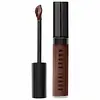What's inside
What's inside
 Key Ingredients
Key Ingredients

 Benefits
Benefits

 Concerns
Concerns

 Ingredients Side-by-side
Ingredients Side-by-side

Water
Skin ConditioningSodium Laureth Sulfate
CleansingSodium Chloride
MaskingCocamidopropyl Hydroxysultaine
CleansingLauramidopropyl Betaine
CleansingSodium Cocoyl Sarcosinate
CleansingTea-Cocoyl Glutamate
CleansingDi-PPG-2 Myreth-10 Adipate
EmollientAloe Barbadensis Leaf Juice
Skin ConditioningPEG-120 Methyl Glucose Dioleate
EmulsifyingSucrose
HumectantSodium Hyaluronate
HumectantCetyl Triethylmonium Dimethicone PEG-8 Succinate
Butylene Glycol
HumectantHexylene Glycol
EmulsifyingPolyquaternium-7
Laureth-2
CleansingCaprylyl Glycol
EmollientSodium Sulfate
Tocopheryl Acetate
AntioxidantEDTA
Disodium EDTA
Phenoxyethanol
PreservativeWater, Sodium Laureth Sulfate, Sodium Chloride, Cocamidopropyl Hydroxysultaine, Lauramidopropyl Betaine, Sodium Cocoyl Sarcosinate, Tea-Cocoyl Glutamate, Di-PPG-2 Myreth-10 Adipate, Aloe Barbadensis Leaf Juice, PEG-120 Methyl Glucose Dioleate, Sucrose, Sodium Hyaluronate, Cetyl Triethylmonium Dimethicone PEG-8 Succinate, Butylene Glycol, Hexylene Glycol, Polyquaternium-7, Laureth-2, Caprylyl Glycol, Sodium Sulfate, Tocopheryl Acetate, EDTA, Disodium EDTA, Phenoxyethanol
Water
Skin ConditioningMethyl Trimethicone
Skin ConditioningTrimethylsiloxysilicate
EmollientButylene Glycol
HumectantDimethicone
EmollientPhenyl Trimethicone
Skin ConditioningNeopentyl Glycol Diheptanoate
EmollientLauryl PEG-9 Polydimethylsiloxyethyl Dimethicone
Skin ConditioningGlycerin
HumectantSodium Hyaluronate
HumectantTocopheryl Acetate
AntioxidantTrehalose
HumectantIsopropyl Isostearate
EmollientTriethyl Citrate
MaskingLecithin
EmollientTrihydroxystearin
Skin ConditioningPEG-10 Dimethicone
Skin ConditioningXanthan Gum
EmulsifyingAmmonium Acryloyldimethyltaurate/Vp Copolymer
PPG-15 Stearyl Ether
EmollientMagnesium Aluminum Silicate
AbsorbentLaureth-7
EmulsifyingSilica
AbrasiveAlumina
AbrasiveDisteardimonium Hectorite
StabilisingDimethicone/PEG-10/15 Crosspolymer
Triethoxycaprylylsilane
Sodium Chloride
MaskingPolysilicone-11
Vinyl Dimethicone/Methicone Silsesquioxane Crosspolymer
Dipropylene Glycol
HumectantCaprylyl Glycol
EmollientZinc Stearate
Cosmetic ColorantHexylene Glycol
EmulsifyingSodium Citrate
BufferingDisodium EDTA
Potassium Sorbate
PreservativePhenoxyethanol
PreservativeMica
Cosmetic ColorantCI 77891
Cosmetic ColorantCI 77491
Cosmetic ColorantCI 77492
Cosmetic ColorantCI 77499
Cosmetic ColorantCI 77163
Cosmetic ColorantWater, Methyl Trimethicone, Trimethylsiloxysilicate, Butylene Glycol, Dimethicone, Phenyl Trimethicone, Neopentyl Glycol Diheptanoate, Lauryl PEG-9 Polydimethylsiloxyethyl Dimethicone, Glycerin, Sodium Hyaluronate, Tocopheryl Acetate, Trehalose, Isopropyl Isostearate, Triethyl Citrate, Lecithin, Trihydroxystearin, PEG-10 Dimethicone, Xanthan Gum, Ammonium Acryloyldimethyltaurate/Vp Copolymer, PPG-15 Stearyl Ether, Magnesium Aluminum Silicate, Laureth-7, Silica, Alumina, Disteardimonium Hectorite, Dimethicone/PEG-10/15 Crosspolymer, Triethoxycaprylylsilane, Sodium Chloride, Polysilicone-11, Vinyl Dimethicone/Methicone Silsesquioxane Crosspolymer, Dipropylene Glycol, Caprylyl Glycol, Zinc Stearate, Hexylene Glycol, Sodium Citrate, Disodium EDTA, Potassium Sorbate, Phenoxyethanol, Mica, CI 77891, CI 77491, CI 77492, CI 77499, CI 77163
 Reviews
Reviews

Ingredients Explained
These ingredients are found in both products.
Ingredients higher up in an ingredient list are typically present in a larger amount.
Butylene Glycol (or BG) is used within cosmetic products for a few different reasons:
Overall, Butylene Glycol is a safe and well-rounded ingredient that works well with other ingredients.
Though this ingredient works well with most skin types, some people with sensitive skin may experience a reaction such as allergic rashes, closed comedones, or itchiness.
Learn more about Butylene GlycolCaprylyl Glycol is a humectant and emollient, meaning it attracts and preserves moisture.
It is a common ingredient in many products, especially those designed to hydrate skin. The primary benefits are retaining moisture, skin softening, and promoting a healthy skin barrier.
Though Caprylyl Glycol is an alcohol derived from fatty acids, it is not the kind that can dry out skin.
This ingredient is also used as a preservative to extend the life of products. It has slight antimicrobial properties.
Learn more about Caprylyl GlycolDisodium EDTA plays a role in making products more stable by aiding other preservatives.
It is a chelating agent, meaning it neutralizes metal ions that may be found in a product.
Disodium EDTA is a salt of edetic acid and is found to be safe in cosmetic ingredients.
Learn more about Disodium EDTAHexylene Glycol is a surfactant. Glycols are a class of alcohols. Hexylene Glycol is a surfactant and emulsifier.
As a surfactant, Hexylene Glycol helps gather dirt and oil on your skin to be washed away.
As an emulsifier, Hexylene Glycol helps keep water and oil together. This prevents them from separating in a product. Hexylene Glycol also thins out the texture of a product by lessening viscosity.
Hexylene Glycol has a small molecular weight.
Learn more about Hexylene GlycolPhenoxyethanol is a preservative that has germicide, antimicrobial, and aromatic properties. Studies show that phenoxyethanol can prevent microbial growth. By itself, it has a scent that is similar to that of a rose.
It's often used in formulations along with Caprylyl Glycol to preserve the shelf life of products.
Chances are, you eat sodium chloride every day. Sodium Chloride is also known as table salt.
This ingredient has many purposes in skincare: thickener, emulsifier, and exfoliator.
You'll most likely find this ingredient in cleansers where it is used to create a gel-like texture. As an emulsifier, it also prevents ingredients from separating.
There is much debate on whether this ingredient is comedogenic. The short answer - comedogenic ratings don't tell the whole story. Learn more about comegodenic ratings here.
The concensus about this ingredient causing acne seems to be divided. Research is needed to understand if this ingredient does cause acne.
Scrubs may use salt as the primary exfoliating ingredient.
Learn more about Sodium ChlorideSodium Hyaluronate is hyaluronic acid's salt form. It is commonly derived from the sodium salt of hyaluronic acid.
Like hyaluronic acid, it is great at holding water and acts as a humectant. This makes it a great skin hydrating ingredient.
Sodium Hyaluronate is naturally occurring in our bodies and is mostly found in eye fluid and joints.
These are some other common types of Hyaluronic Acid:
Learn more about Sodium HyaluronateTocopheryl Acetate is AKA Vitamin E. It is an antioxidant and protects your skin from free radicals. Free radicals damage the skin by breaking down collagen.
One study found using Tocopheryl Acetate with Vitamin C decreased the number of sunburned cells.
Tocopheryl Acetate is commonly found in both skincare and dietary supplements.
Learn more about Tocopheryl AcetateWater. It's the most common cosmetic ingredient of all. You'll usually see it at the top of ingredient lists, meaning that it makes up the largest part of the product.
So why is it so popular? Water most often acts as a solvent - this means that it helps dissolve other ingredients into the formulation.
You'll also recognize water as that liquid we all need to stay alive. If you see this, drink a glass of water. Stay hydrated!
Learn more about Water